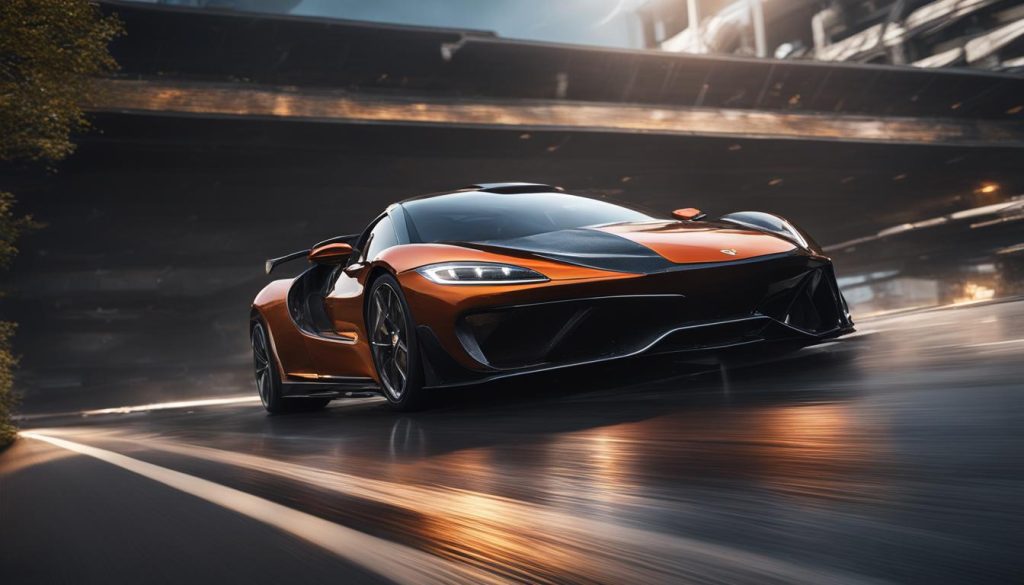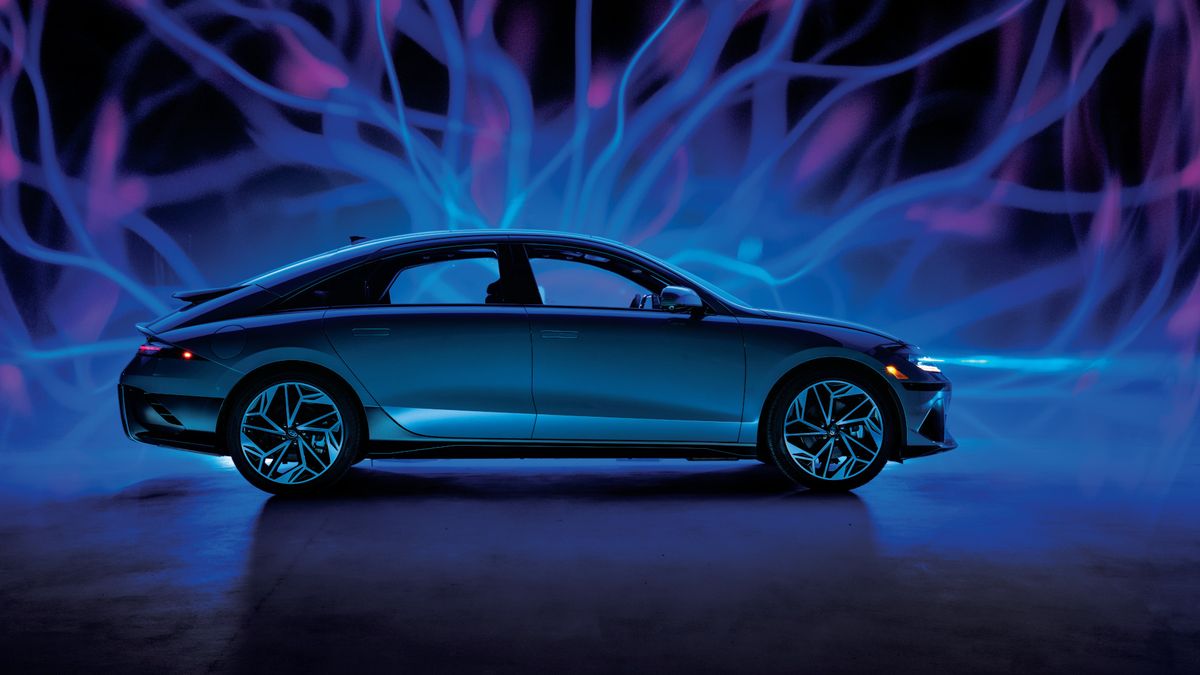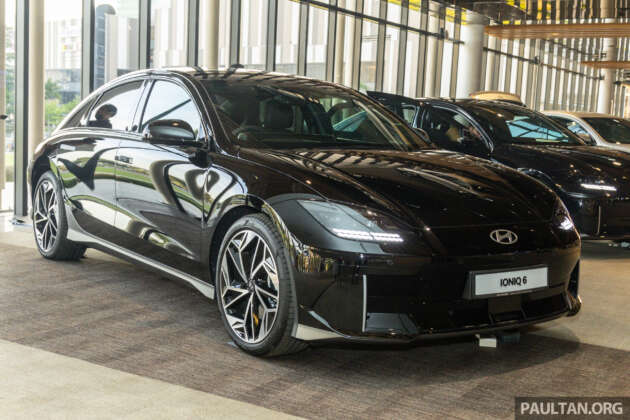Overview
Hyundai is aiming to compete with the Tesla Model 3 with its latest EV model, a sedan called the Ioniq 6. The car is a slam dunk in our opinion, and so impressed us with its blend of style and substance that we named it our EV of the Year for 2023. This four-door fits into the company’s Ioniq subbrand made up of electric vehicles and shares components with the taller and boxier Ioniq 5. This means single- and dual-motor configurations are offered, with two battery-pack options. In combination with the aerodynamic shape, the 77.4-kWh battery pack (only the base model has the smaller 53.0-kWh pack) means the 6 will provide an estimated 361 miles of max driving range in its longest-range SE Long Range configuration. Its styling is inspired by Hyundai’s dramatic Prophecy concept, and the Ioniq 6 is as quick as it is futuristic and stylish. It also offers a more luxurious interior than the Model 3 and features more onboard technology when compared with Hyundai’s gas-powered Sonata and Elantra sedans.
What’s New for 2023?
The Ioniq 6 is a new addition to the lineup. It slots in numerically in between the Ioniq 5 and the upcoming Ioniq 7 but is a sedan with a more low-slung profile than those taller crossovers.
Pricing and Which One to Buy
The Ioniq 6 is slightly cheaper than the Ioniq 5, with the sedan starting at $42,715 for the base SE Standard Range with the smaller battery. Its powertrain lineup is similar too, as it offers two battery-pack options and either a rear-wheel-drive single-motor setup or an optional dual-motor all-wheel-drive version that costs $3500 extra. We think the SE Long Range offers the best value, as it has the longest range estimate of any model and more horsepower than the base Standard Range car. The SEL and Limited trim levels come only with the bigger battery pack.
EV Motor, Power, and Performance
The Ioniq 6 shares a platform with the Ioniq 5; its powertrain mostly mirrors that model’s offerings. The base model makes 149 horsepower and has a single electric motor powering the rear wheels. Single-motor cars equipped with the Long Range battery pack have 225 horsepower. The more expensive 320-hp dual-motor versions provide all-wheel drive thanks to front and rear electric motors and come only with the bigger battery. So far, we’ve tested the RWD Long Range, which got to 60 mph in 6.2 seconds, and the AWD Long Range, which was much quicker and sprinted to 60 mph in 4.3 seconds. While the Ioniq 6’s ride is smooth and its cabin is well-isolated and quiet, its handling is still plenty engaging. Its low center of gravity gives it a planted feel in corners and steering-wheel paddles allow the driver to select different modes of regenerative braking on the fly.
Range, Charging, and Battery Life
The EPA estimates the Ioniq 6 has a maximum driving range of 361 miles. The Ioniq 6 SE RWD Long Range, which has the most range for the model, gives it a 58-mile advantage over the smaller Ioniq 5. The all-wheel-drive Ioniq 6 Limited is rated at 270 miles, which is still an impressive showing for the shortest-driving Ioniq 6. The RWD Long Range Ioniq 6 completed our 75-mph real-world highway range test at 100 miles under its EPA estimate, with 260 miles of range. The AWD model came closer to its EPA estimate in the real world, achieving a 75-mph highway range of 220 miles in our testing.
Fuel Economy and Real-World MPGe
The EPA gives the rear-drive Ioniq 6 SE Long Range an estimated 140 MPGe combined rating. For more information about the Ioniq 6’s fuel economy, visit the EPA’s website.
Interior, Comfort, and Cargo
Hyundai has emphasized lounge-like comfort in its Ioniq models so far, and the 6 is no exception. The cabin shows a similarly modern and minimalist aesthetic as the Ioniq 5 and its flat floor aids the feeling of spaciousness inside. As a conventional four-door sedan, it offers space for five across two rows of seating. Hyundai has gone to great lengths to ensure a quiet cabin, with several layers of sound-deadening material sandwiched between the floor and the carpeting. The cargo area inside the trunk may not rival that of a hatchback or crossover, but the rear seats fold to expand the space back there.
Infotainment and Connectivity
Both a 12.3-inch digital gauge cluster and a 12.3-inch infotainment screen are offered. The Ioniq 6 uses the same software as other Hyundai models, which incorporate BlueLink for connectivity functions and link with smartphones using either Apple CarPlay or Android Auto. More details about the infotainment system will be available closer to the Ioniq 6’s official launch.
Safety and Driver-Assistance Features
While the Ioniq 6 that’s earmarked for sale in the United States won’t come with the Korean-market version’s cool camera-based exterior mirrors, Hyundai equips our version with all manner of driver-assistance tech to make up for it. For more information about the Ioniq 6’s crash-test results, visit the National Highway Traffic Safety Administration (NHTSA) and Insurance Institute for Highway Safety (IIHS) websites. Key safety features are likely to include:
- Standard automated emergency braking with pedestrian detection
- Standard lane-departure warning with lane-keeping assist
- Available adaptive cruise control with a lane-centering feature
Warranty and Maintenance Coverage
Hyundai provides one of the best warranty plans in the industry. Likewise, it comes with an impressive amount of complimentary scheduled maintenance.
- Limited warranty covers five years or 60,000 miles
- Powertrain warranty covers 10 years or 100,000 miles
- Battery is covered for 10 years or 100,000 miles
- Complimentary maintenance is covered for three years or 36,000 miles
Specifications
Specifications
2023 Hyundai Ioniq 6 SE Long Range
Vehicle Type: rear-motor, rear-wheel-drive, 5-passenger, 4-door sedan
PRICE
Base/As Tested: $46,615/$46,825
Options: carpeted floor mats, $210.
POWERTRAIN
Motor: permanent-magnet synchronous AC/, 225 hp, 258 lb-ft
Battery Pack: liquid-cooled lithium-ion, 77.4 kWh
Onboard Charger: 10.9 kW
Peak DC Fast-Charge Rate: 235 kW
Transmission: direct-drive
CHASSIS
Suspension, F/R: struts/multilink
Brakes, F/R: 12.8-in vented disc/12.8-in disc
Tires: Hankook Ventus S2 AS EV
225/55R-18 98W M+S
DIMENSIONS
Wheelbase: 116.1 in
Length: 191.1 in
Width: 74.0 in
Height: 58.9 in
Passenger Volume, F/R: 57/47 ft3
Trunk Volume: 11 ft3
Curb Weight: 4225 lb
C/D TEST RESULTS
60 mph: 6.2 sec
1/4-Mile: 14.8 sec @ 95 mph
100 mph: 16.5 sec
Results above omit 1-ft rollout of 0.3 sec.
Rolling Start, 5–60 mph: 6.3 sec
Top Gear, 30–50 mph: 2.5 sec
Top Gear, 50–70 mph: 3.6 sec
Top Speed (gov ltd): 116 mph
Braking, 70–0 mph: 168 ft
Roadholding, 300-ft Skidpad: 0.86 g
C/D FUEL ECONOMY AND CHARGING
Observed: 116 MPGe
75-mph Highway Range: 260 mi
EPA FUEL ECONOMY
Combined/City/Highway: 140/153/127 MPGe
Range: 361 mi
Latest Content – Car and Driver
#Hyundai #Ioniq #Review #Pricing #Specs














